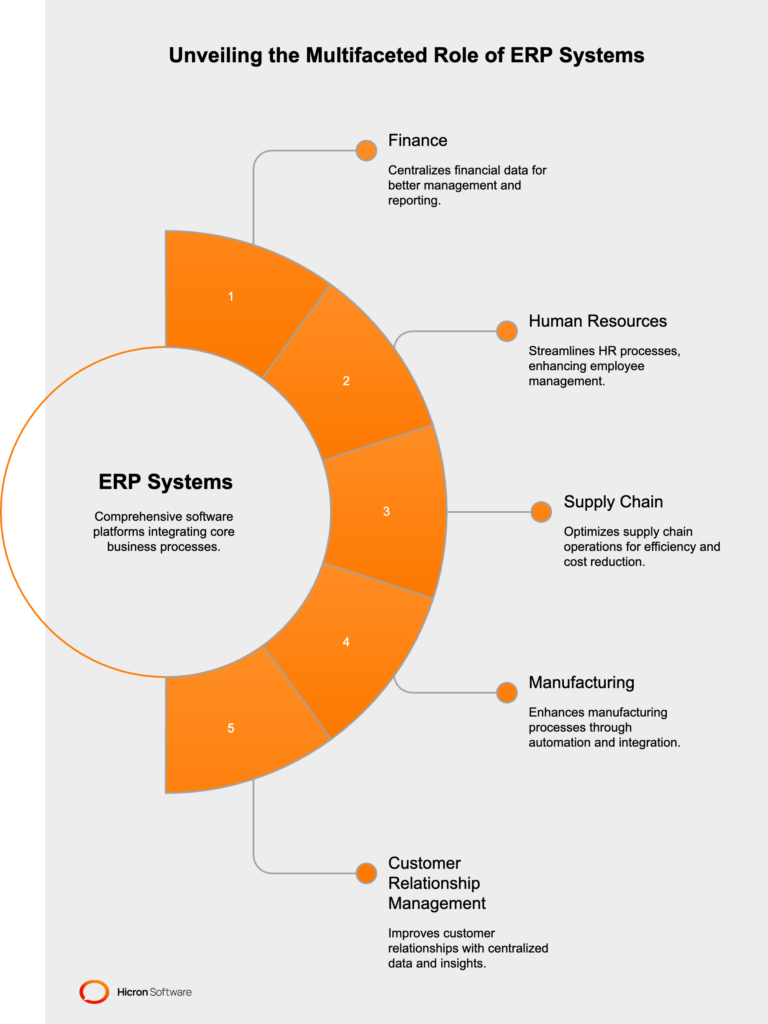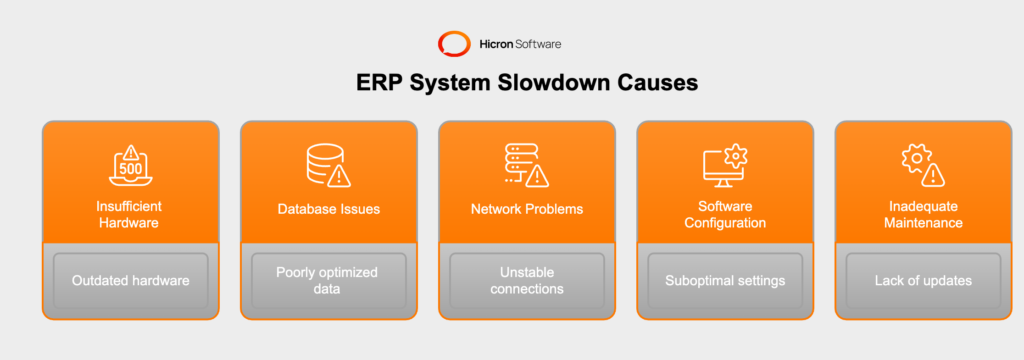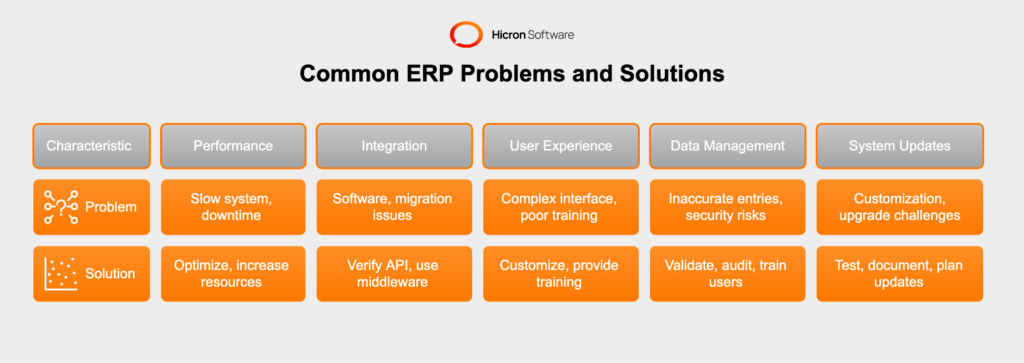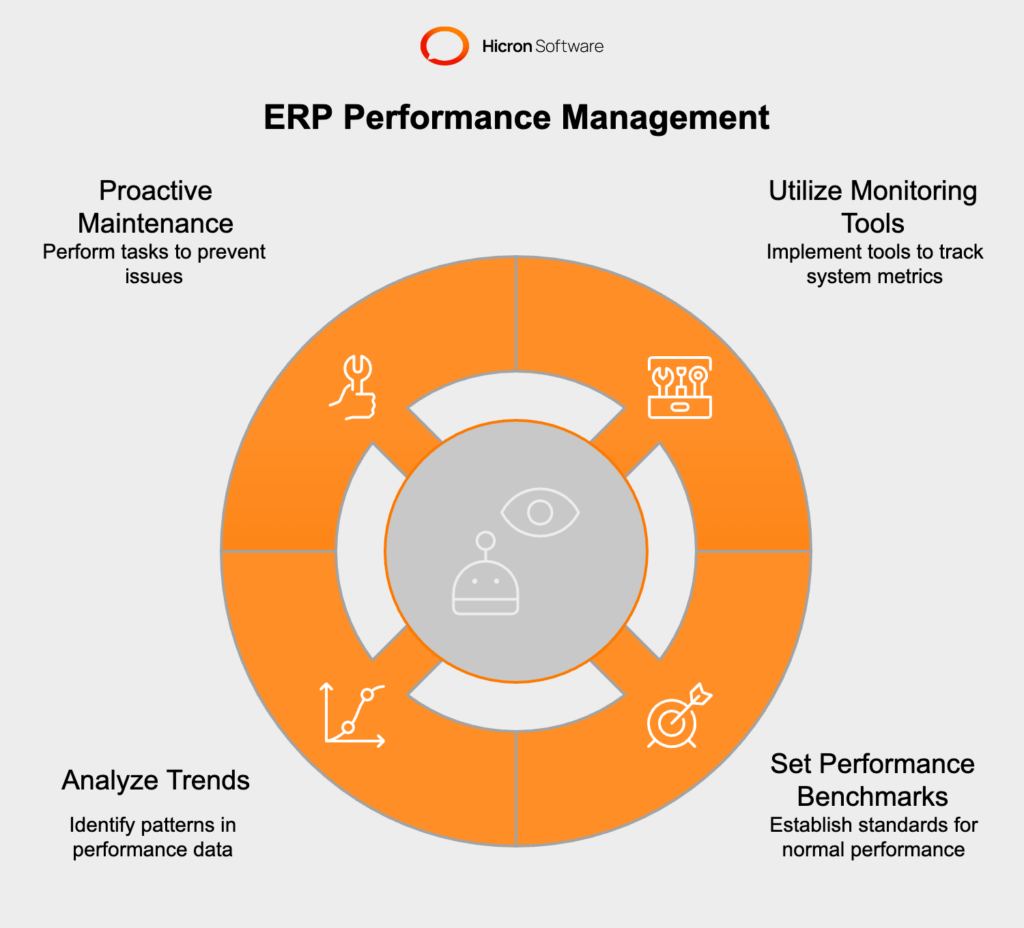How to Troubleshoot Common POS Issues: Solution Guide
- May 08
- 19 min

ERP troubleshooting involves identifying and resolving system issues to ensure seamless business operations and minimize downtime.
Enterprise Resource Planning (ERP) systems are comprehensive software platforms designed to manage and integrate the core business processes of an organization. ERP systems centralize data and streamline operations across various departments, such as finance, human resources, supply chain, manufacturing, and customer relationship management.
By providing a unified view of business activities, ERP systems enhance decision-making, improve efficiency, and foster collaboration within organizations. The significance of ERP systems lies in their ability to automate and optimize workflows, reduce operational costs, and drive business growth by ensuring that all critical functions are interconnected.

The goal of this article is to address common problems encountered during the usage of ERP systems and to provide practical solutions for overcoming these challenges. Despite their numerous benefits, ERP systems can present difficulties such as implementation hurdles, data integration issues, and user adoption barriers. By identifying and addressing these problems, businesses can maximize their ERP investments and fully leverage the system’s capabilities. Whether you are in the process of implementing an ERP system or looking to optimize an existing one, this guide will offer valuable insights and actionable strategies to ensure your ERP system operates smoothly and delivers its intended value.
We gathered the often-asked questions and answers on ERP.
An ERP (Enterprise Resource Planning) system is a comprehensive software platform designed to integrate and manage the core processes of a business. It centralizes data from various departments such as finance, human resources, supply chain, manufacturing, and customer relationship management into a single unified system. Components of an ERP system typically include modules for different business functions, a central database, and a user-friendly interface. The ERP system works by streamlining workflows, automating routine tasks, and providing real-time insights into business operations, which enhances decision-making and overall efficiency.
There are several common causes of performance issues in ERP systems:

Addressing these issues by upgrading hardware, optimizing databases, ensuring a stable network, and maintaining regular system updates can help improve ERP system performance.
Ensuring data security in your ERP system is crucial for safeguarding sensitive business information. Here are some tips:

By following these practices, you can enhance the security of your ERP system and protect your valuable business data.
Symptoms: Lagging interfaces, slow report generation.
Solutions: Optimize database queries to improve data retrieval speeds, increase server resources such as RAM and CPU to handle higher loads, and schedule regular maintenance tasks like database indexing and system cleanups to ensure smooth operation.
Symptoms: Frequent crashes, unavailability of the ERP system.
Solutions: Implement robust disaster recovery plans to minimize downtime during system failures, ensure high availability configurations with redundant systems and failover mechanisms, and conduct regular system health checks to identify and address potential issues before they cause downtime.
Symptoms: Data not syncing correctly, communication errors between systems.
Solutions: Verify API compatibility to ensure seamless communication between systems, use middleware solutions to facilitate data exchange and integration, and consult with integration experts to address complex integration challenges.
Symptoms: Incomplete or inaccurate data transfer.
Solutions: Conduct thorough data validation to ensure data integrity before and after migration, use automated migration tools to minimize human errors, and perform test migrations to identify and resolve potential issues before the final migration.
Symptoms: Difficulty navigating the system, frequent user errors.
Solutions: Customize dashboards to present relevant information in an easily accessible format, provide user training to familiarize employees with the system, and simplify workflows to reduce complexity and improve usability.
Symptoms: High error rates, low user adoption.
Solutions: Develop comprehensive training programs that cover all aspects of the ERP system, offer ongoing support to address user queries and issues, and create user manuals and other resources to assist users in their day-to-day interactions with the system.
Symptoms: Discrepancies in reports, data inconsistencies.
Solutions: Implement data validation rules to ensure data accuracy at the point of entry, conduct regular audits to identify and correct data inconsistencies, and train users on data entry best practices to reduce errors.
Symptoms: Unauthorized access, data breaches.
Solutions: Enforce strict access controls to limit data access based on user roles, apply encryption to protect sensitive data both in transit and at rest, and regularly update security protocols to guard against emerging threats.
Symptoms: Custom features not working as expected.
Solutions: Ensure proper testing of customizations before deployment to catch and resolve issues, document all customizations for future reference and troubleshooting, and work with experienced developers to create and maintain custom features.
Symptoms: System instability after updates, compatibility issues.
Solutions: Plan updates carefully to avoid disruptions, conduct compatibility testing to ensure new updates work seamlessly with existing customizations and integrations, and have a rollback plan in place to revert to a stable version if issues arise during the update.

In today’s fast-paced business environment, an efficient and reliable Enterprise Resource Planning (ERP) system is essential for seamless operations and maintaining a competitive edge. However, to ensure ongoing efficiency and reliability, proactive maintenance is key. Here, we explore some essential tips for maintaining your ERP system effectively.
Keeping your ERP system updated is not just about having the latest features; it’s crucial for security and system health. Regular system updates help to:
Protect Against Security Threats: System updates often include patches for security vulnerabilities. By keeping your ERP up-to-date, you reduce the risk of cyber-attacks.
Enhance Functionality: Updates typically come with improved functionality and new features that can streamline operations and boost productivity.
Ensure Compatibility: As other software and systems evolve, updates help maintain compatibility, ensuring smooth integrations and interactions.
Fix Bugs: Regular updates address existing bugs, which can prevent potential disruptions in your business processes.
To manage updates effectively, establish a schedule for regularly checking and applying updates. Involve your IT team in planning and executing updates to minimize downtime.
Data is the backbone of your ERP system, and losing it can be catastrophic. Routine backups are vital for data integrity and recovery. Here are practical steps to ensure effective backups:
Set a Backup Schedule: Determine the frequency of backups based on your business needs—daily, weekly, or monthly. Consistent backups ensure that you always have the latest data.
Automate the Process: Use automated tools to perform backups to reduce the risk of human error and ensure consistency.
Validate Backups: Regularly check that backups are completed successfully and test the restoration process. This validation ensures that your data can be recovered when needed.
Store Backups Securely: Keep backups in a secure, offsite location to protect against physical damage or theft.
Routine backups provide peace of mind, knowing that your critical data can be restored swiftly in the event of a system failure or data loss.
To maintain optimal ERP performance, continuous monitoring is essential. Here’s how you can proactively manage performance:
Utilize Monitoring Tools: Implement monitoring tools that track system performance metrics such as CPU usage, memory usage, and response times.
Set Performance Benchmarks: Establish benchmarks for normal performance levels. Monitoring tools can alert you when these benchmarks are exceeded, signaling potential issues.
Analyze Trends: Regular analysis of performance data can help identify patterns that may indicate underlying problems. Addressing these patterns early can prevent larger issues.
Proactive Maintenance: Use the insights gained from monitoring to perform proactive maintenance tasks like optimizing database performance or upgrading hardware.

By keeping a close eye on system performance, you can address issues before they impact your operations, ensuring a smooth and efficient ERP experience.
Your ERP system users are on the front lines, interacting with the system daily. Encouraging their feedback is invaluable for continuous improvement. Here’s how to establish an effective feedback mechanism:
Create Easy Feedback Channels: Provide multiple ways for users to submit feedback, such as surveys, suggestion boxes, or dedicated email addresses.
Act on Feedback: Ensure that feedback is reviewed promptly, and take action where necessary. This responsiveness shows users that their input is valued.
Communicate Improvements: Keep users informed about the changes and improvements made based on their feedback. This transparency builds trust and encourages ongoing participation.
Foster a Culture of Continuous Improvement: Encourage a culture where users feel comfortable sharing their experiences and suggestions without fear of reprisal.
A robust user feedback mechanism helps in identifying pain points and opportunities for enhancement, leading to a more user-friendly and efficient ERP system.
In this blog post, we explored essential tips for maintaining your ERP system effectively. We discussed the importance of regular system updates to prevent issues and enhance functionality, the necessity of routine backups to safeguard data, the benefits of performance monitoring to address issues proactively, and the value of a user feedback mechanism for continuous improvement.
Proactive maintenance is crucial for minimizing ERP issues and ensuring seamless operations. Regular updates, consistent backups, vigilant performance monitoring, and user feedback not only keep the system running smoothly but also empower your team to utilize the ERP system to its fullest potential. Proper training and a proactive approach can significantly reduce the risk of disruptions and enhance overall productivity.
We encourage you to implement these proactive maintenance tips to keep your ERP system in top shape. If you need further assistance or customized solutions, don’t hesitate to reach out to our team of experts. Together, we can ensure that your ERP system remains a robust and reliable backbone for your business.
Here are some online communities and forums where ERP users can share experiences and solutions:
These communities are great places to connect with other ERP users, learn from their experiences, and find solutions to common issues.
